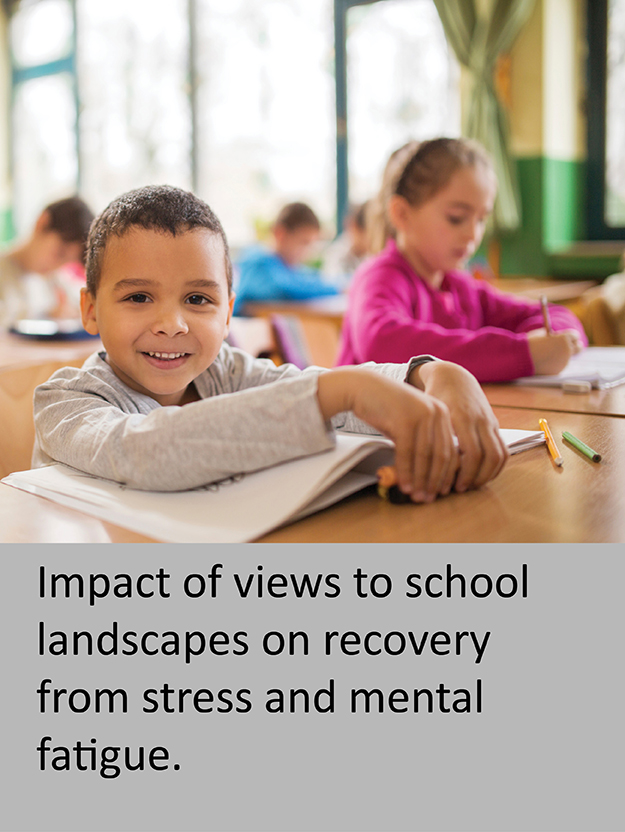Impacts of Views to School Landscapes

Previous research has demonstrated positive associations between the greenness of high school land- scapes and school wide academic performance. We do not known, however, if green landscapes cause better performance or if the association between the two is a product of self-selection. If there is a causal relationship, the pathways through which green school landscapes affect student performance remain unclear. We hypothesize that views onto green landscapes help students recover from mental fatigue and stress. To test these hypotheses, we conducted a randomized controlled experiment with 94 high school students at five high schools. Participants were randomly assigned to classrooms without windows or with windows that opened onto a built space or a green space. Participants engaged in typical classroom activities followed by a break in the classroom to which they were assigned. Attentional functioning was measured using Digit Span Forward and Backwards. Physiological stress levels were measured by skin conductance, body temperature, pNN50 (the proportion of the number of pairs of successive NNs that differ by more than 50 ms divided by the total number of NNs) and LF/HF (the ratio between low- frequency peak and high frequency peak). Results demonstrate that classroom views to green landscapes cause significantly better performance on tests of attention and increase student’s recovery from stressful experiences. A lack of mediation effect demonstrates that attention restoration and stress recovery are two distinct processes. Implications for school site selection, design and renovation are discussed.





